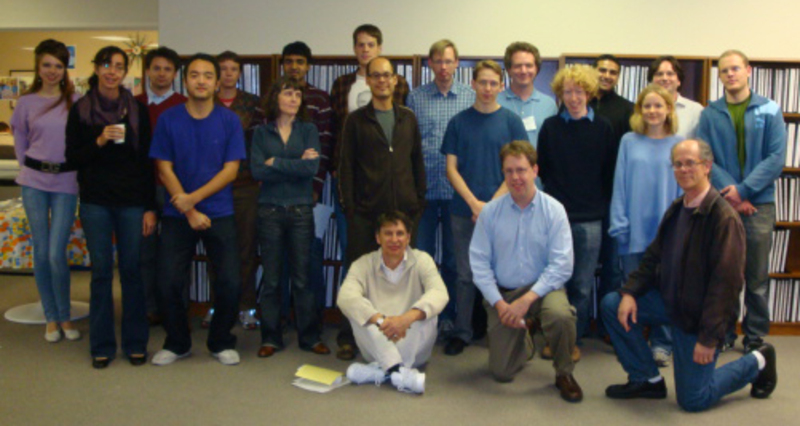Rational curves and A1-homotopy theory
October 5 to October 9, 2009
at the
American Institute of Mathematics,
San Jose, California
organized by
Aravind Asok and Jason Starr
Original Announcement
This workshop will be devoted to studying recent interactions between rational connectivity and the newly developing theory of $A^1$-algebraic topology.
A smooth proper variety over an algebraically closed field k having characteristic 0 is rationally connected if any pair of k-points is contained in a rational curve. Rationally connected varieties have highly non-trivial arithmetic structure. More recently, rationally connected varieties have been shown to have interesting homotopic structure as well: they are connected (in an appropriate sense) from the standpoint of $A^1$-homotopy theory. One expects that techniques of homotopy theory can be applied to study arithmetic and geometry of rationally connected varieties and, conversely, geometric properties of specific rationally connected varieties can provide insights about $A^1$-homotopy theory. The goal of this program is to introduce participants studying arithmetic of rationally connected varieties to the techniques of homotopy theory and vice versa.
During the workshop, we will focus on the following problems.
- What is a good definition of rationally simply connected variety? Rational simple connectedness is a notion suggested by Mazur and developed by de Jong and Starr to prove existence of rational points for varieties defined over the function field of a surface. While various tentative definitions have been suggested, it is widely agreed that a ``good" definition has not yet been found. Since rationally connected varieties are $A^1$-connected (in an appropriate sense), one can try to connect notions of higher rational connectivity with $A^1$-homotopy groups to obtain a ``good" definition.
- Can weak approximation be approached using obstruction theory?
A Serre fibration of CW complexes has a section only if certain obstruction classes vanish. These are defined in cohomology of the base having coefficients in homotopy of the fiber. Similarly, weak approximation of adelic points of a variety over a number field holds only if the Brauer-Manin obstruction vanishes (for rationally connected varieties this is conjectured to be the only obstruction). One hope is that $A^1$-homotopy theory will bridge these two results and extend them to answer the following geometric problem of Hassett and Tschinkel: Given a family of rationally connected varieties defined over a curve, are formal points weakly approximated by rational points?
- Can techniques of rational curves be used to understand norm varieties?
A fundamental step in the proof of the Bloch-Kato conjecture by Rost and Voevodsky involves the construction of certain algebraic varieties with prescribed cohomological properties. In cases where these varieties can be explicitly constructed, one may use them to provide examples of unirational non-rational varieties generalizing the examples of Artin and Mumford. In the known approach to construct the norm varieties by induction on the length of the symbol, it is an observation that starting with the ``usual" Brauer-Severi variety for a symbol of length 2, one gets a rationally connected variety. There are open questions related to this construction. For instance, can one construct a norm variety with the property that existence of an F-point (any field F) implies all the F-points are rationally chain connected? For norm varieties at the prime 2, Pfister quadrics provide an affirmative answer. For norm varieties at odd primes, the question is open. We will explore norm varieties in greater detail with particular attention to their rational connectedness properties.
Material from the workshop
A list of participants.
The workshop schedule.
A report on the workshop activities.
Papers arising from the workshop:

